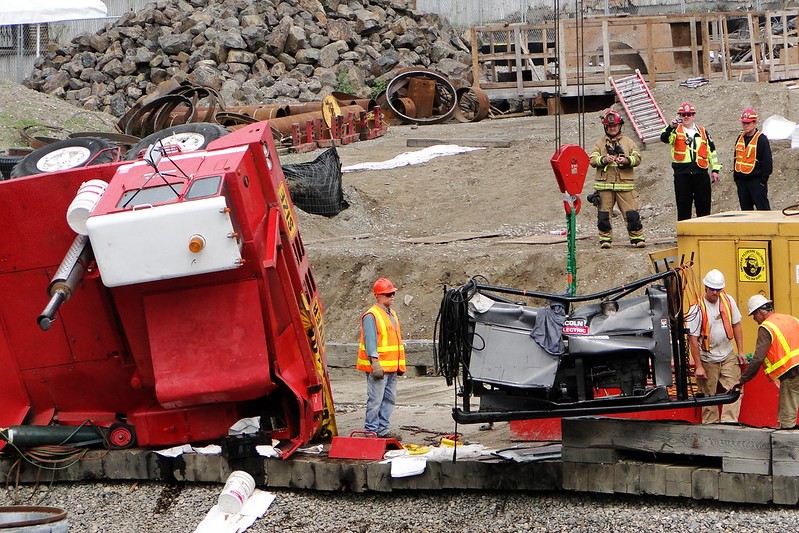Despite improvements in health and safety, construction sites are still risky places. Cranes pose a significant risk if proper precautions are not taken. The HSE reports that there have been 61 accidents involving tower cranes since 2001. In these, nine people died and 25 were seriously injured. This is not a situation any company wants, so here are some of the most common hazards.

Image Credit
Falling Loads
The HSE says that falling loads present a significant potential for death and major injury. There are a number of possible reasons for falling loads, including insecure loads that slip, mechanical failure, operator incompetence and two blocking – when the uppermost hoist line touches the upper block, boom tip or similar. You can avoid these incidents by ensuring that your workers are correctly trained and that training is repeated regularly.
Crane Overload
This is the reason for most structural failures in cranes. It sounds obvious, but overload can happen if the load is beyond the crane’s capacity when you side-load a boom or if you swing the load suddenly. This type of problem is more likely to happen in something like a portable davit crane that is bearing too much weight because your workers aren’t familiar with it.

Electrical Hazards
These occur when a metal part of the crane comes into contact with a high-voltage power line or some other power source. It’s not just those who are actually touching the crane that may be affected: others in the surrounding area might be at risk. Check operator instructions from suppliers such as https://www.gmh.co.uk/davit-cranes/ to ensure that you are using them properly.
Prevention Is Better Than Cure
To help prevent accidents, ensure that:
• You train all your employees to the correct standard. Not only are you required to do this by law, you will help to make your workplace safer.
• You make sure that all your employees know that they should not stand under loads being carried on cranes. And make sure that your crane operators exercise caution when they are moving loads so that they don’t move them over other employees.
• Ensure that a supervisor is present at all times when cranes are being operated.
• Make the loading limits clear to all – put them in prominent places and remind people regularly.
Finally, ensure all your employees wear proper PPE.



